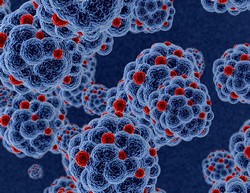In search of new ways to battle HIV
Reverse transcriptase is part of HIV. This HIV enzyme reads the sequence of viral RNA nucleic acids that have entered the host cells and transcribes the sequence into a complementary DNA sequence. Without reverse transcriptase, the viral genome could not be incorporated into the host cells nor reproduced. Sometimes, reverse transcriptase makes mistakes reading the RNA sequence. The result is that not all viruses produced in an infected cell are alike. Instead, they end up with a wide variety of subtle molecular differences. Now, EU-funded scientists have provided a fresh look at the action of reverse transcriptase. Within the BIOPHYSRETRAIN (Biophysics of reverse transcription and its inhibition) project, scientists developed and used their own single molecule methods to study DNA and RNA interactions with this HIV enzyme. Specifically, optical tweezers allowed them to follow both polymerisation and translocation of reverse transcriptase. By applying mechanical forces on biological molecules and molecular complexes, this laser-based analytical probe is capable of directly measuring molecular movements at Ångström scale. The next steps were to find out more about mechanisms of reverse transcriptase's inhibition by existing drugs. BIOPHYSRETRAIN work focused on the resistance developed by certain viral DNA mutations. Valuable insights were gained into mechanistic similarities of HIV reverse transcriptase and nucleic acid polymerases, catalysing the formation of DNA and RNA from nucleoside-triphosphate precursors. Although drug discovery efforts to combat HIV have been successful, multiple treatments are still required because the virus mutates and develops resistance to individual drugs. BIOPHYSRETRAIN has laid the groundwork for the elucidation of enzymes' and proteins' actions and, potentially, the transformation of HIV drug development.







